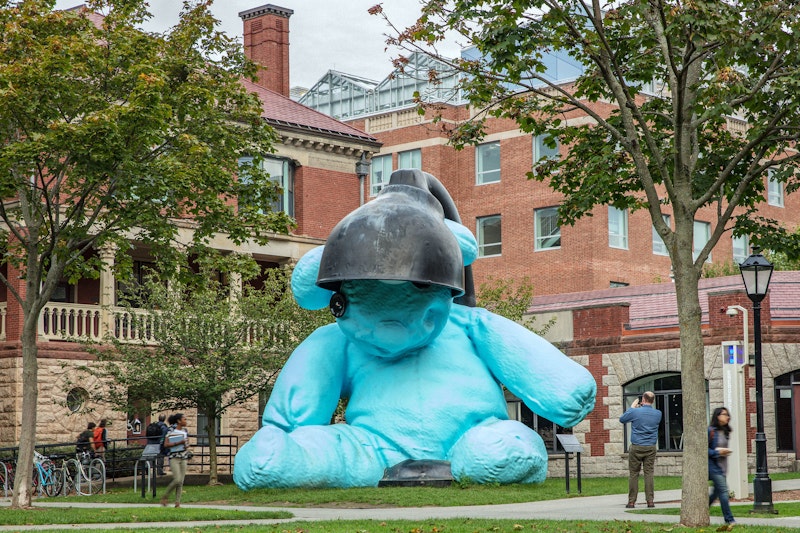Tom Friedman: Do you know the story about the child who never said anything?
Maya Lin: Sorry. [Laughs]
Friedman: Well, a fly could take it and fly off with it, I think. I just find it dangerous.
Lin: It’s a bit unusual, as you said, to be working between the architecture, the art, and what I would say is a synthesis, the memorials—they’re problem solving, but it’s very symbolic.
Friedman: It becomes symbolic because you are looking at it.
•••
Lin: At one point I said, “Can we stop time? Can we freeze a moment in something that is always in flux?”
Friedman: I’d considered that but it seemed too obvious.
Lin: You’re always feeling like, well, where is home?
Friedman: That’s something you’ve mentioned quite a few times.
Lin: It’s almost as if you might barely notice it, you might walk right by it, but you have to pay attention.
•••
Friedman: Well, yes. But the Friendly Plastic actually complicated the installation because you have to boil it, then you have to wait exactly the right amount of time for it to cool off before you stick it on the ceiling and stretch it to the floor.
Lin: And the thinner it gets, the more vulnerable it is to wave action from underneath.
Friedman: In Tai Kwon Do you learn forms which represent an ideal situation, an ideal fight.
Lin: I don’t think I ever really understood why; I just was very curious.
Friedman: I’ve been lucky.

